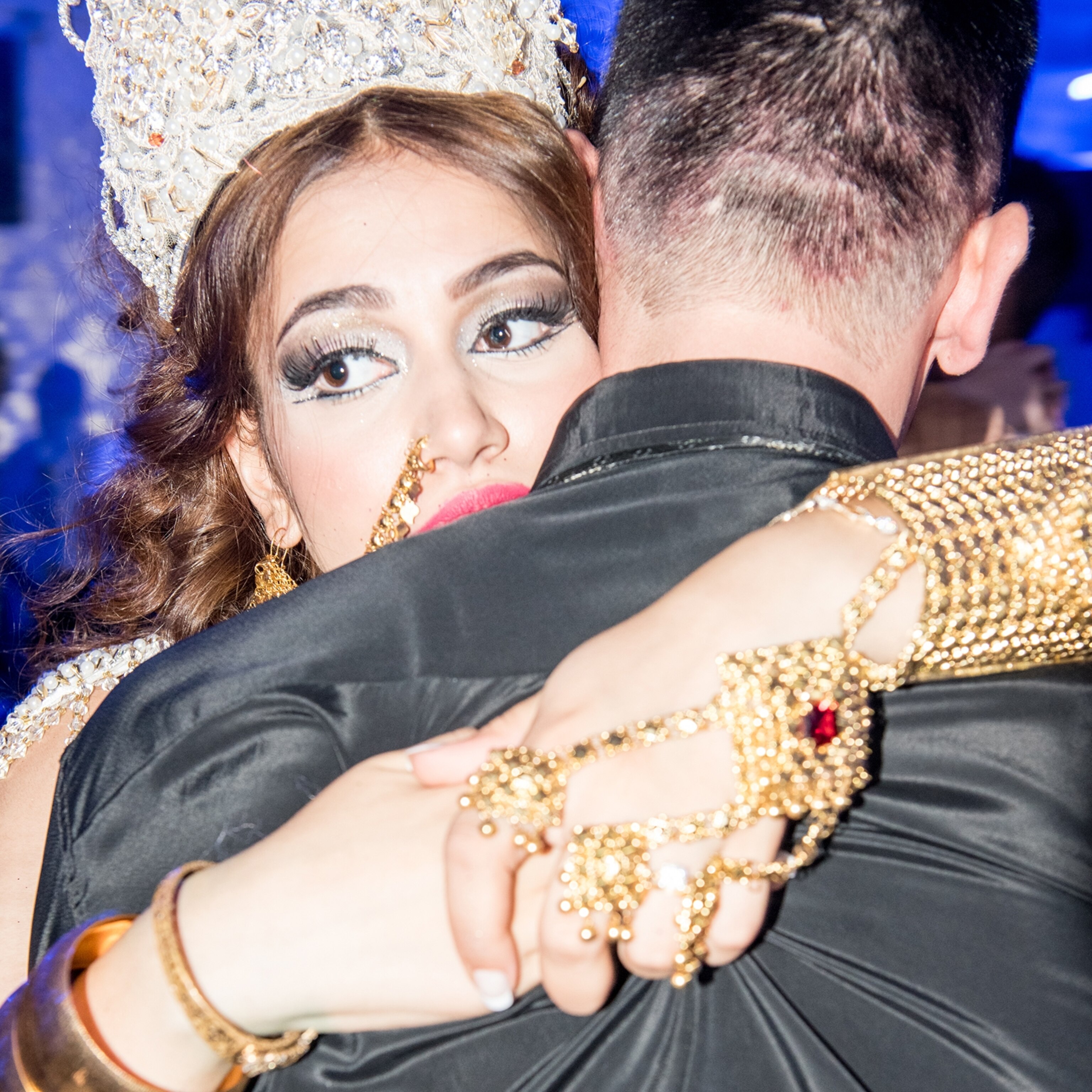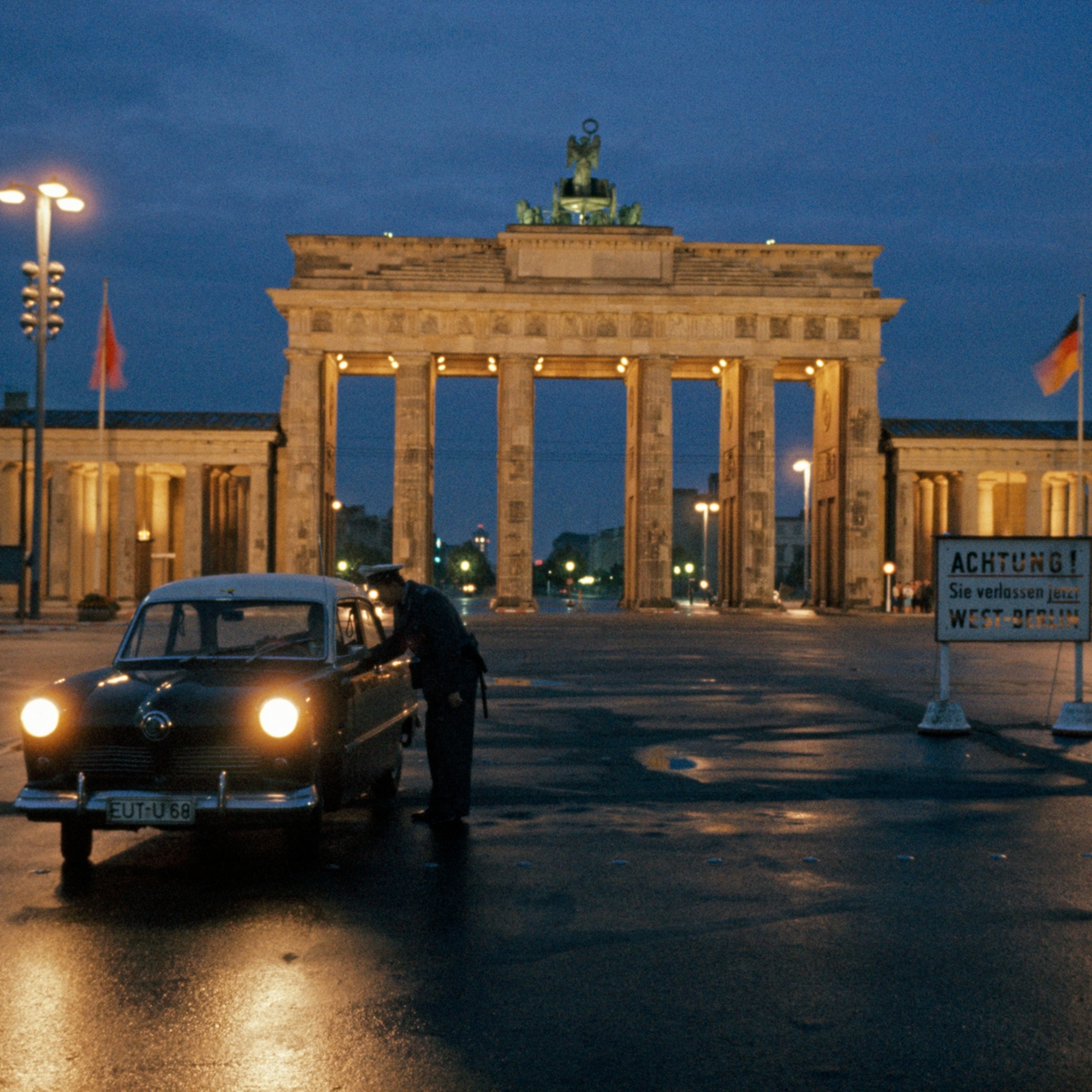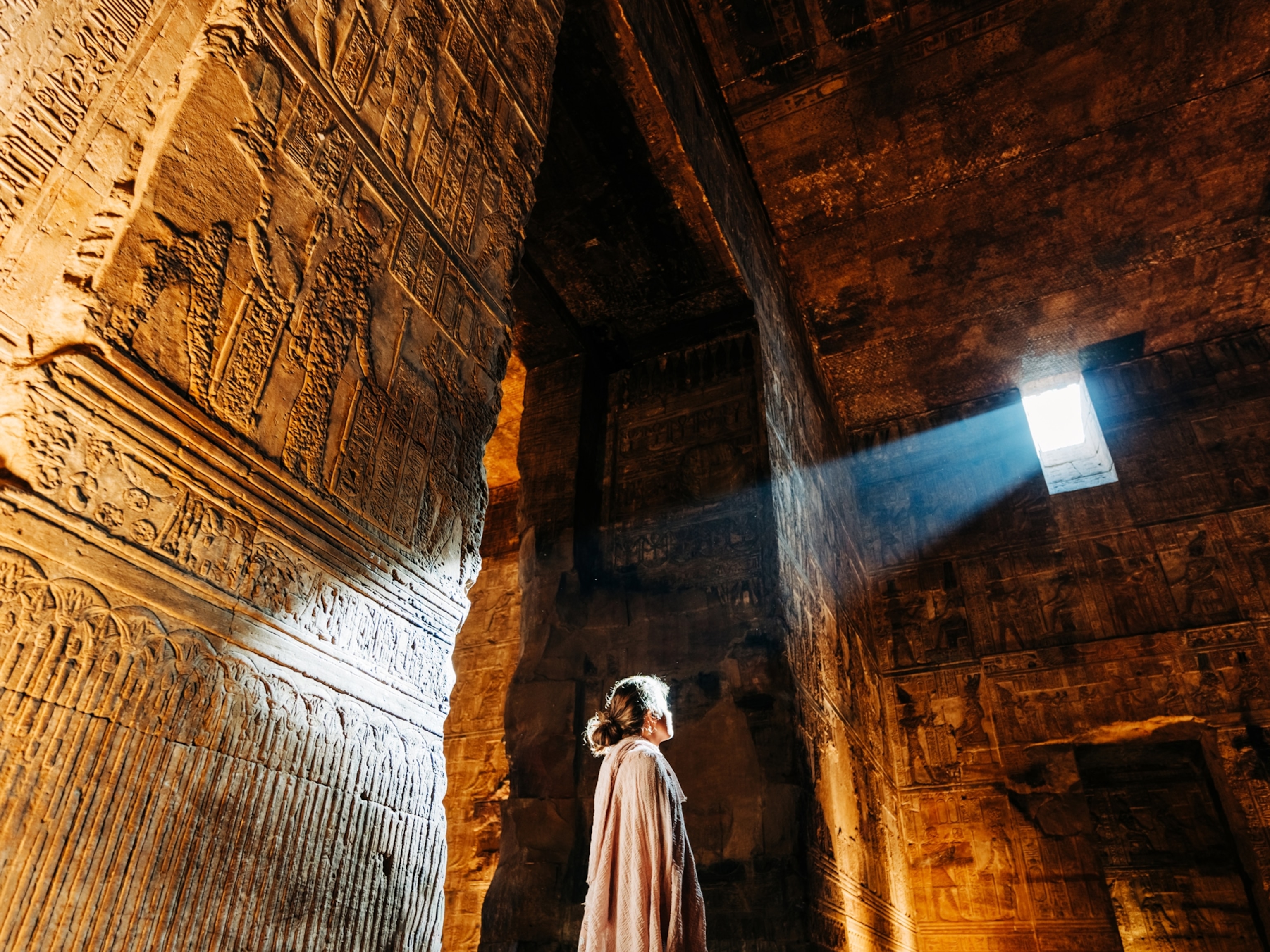
In a War-Weary Syrian City, a Wedding Celebration
Despite mourning the missing, a Homs family quietly celebrates a young bride.
The half-boarded-up window of Faisal Fetrawi’s front room was a solitary glow on his rubble-strewn street in Baba Amr, an obliterated neighborhood in Homs, Syria’s third largest city. The 71-year-old sat outside on a plastic chair, swaddled in a big jacket and woolly hat, looking out at a sunset-bruised sky. The buildings behind him, in various states of collapse, made a jagged silhouette. His 15-year-old granddaughter, Farida, had been away at the hairdresser’s for nearly four hours. Inside, a shiny peach sheet was draped over the living room wall for her wedding. It barely covered the freshly laid bricks that filled the hole, the size of a crouching man, that they had used to pass safely in and out of the house during years of shelling and gunfire.
Situated at an integral crossroads among Syria’s major cities and boasting the country’s biggest oil refinery, their city and its surroundings were home to more than a million people before the war. Once called the “capital of the revolution,” Homs was the site of mass civilian protests followed by one of the most brutal sieges in the early years of the Syrian civil war. The predominantly Sunni neighborhood of Baba Amr became a stronghold for the armed opposition to President Bashar al-Assad’s regime. Baba Amr was relentlessly bombarded by air strikes, with hundreds of its residents killed. Many others fled.
In the capital city of Damascus, a sense of normalcy had returned, despite rumbles of distant shelling. In Aleppo, families were returning to even the most devastated areas. But in Baba Amr, time stood still. Years after the worst fighting ended in 2012, the area remained vastly empty, a swath of buildings caved in or agape, concrete folded like sheets of cake icing. Wild tufts of grass sprouted in the roads; the splatter marks of mortars were seared into the tarmac. The headstones at the cemetery opposite Faisal’s home stood crooked, as if the ground had shaken them loose. The hulls of vehicles, surreally twisted, rusted nearby.
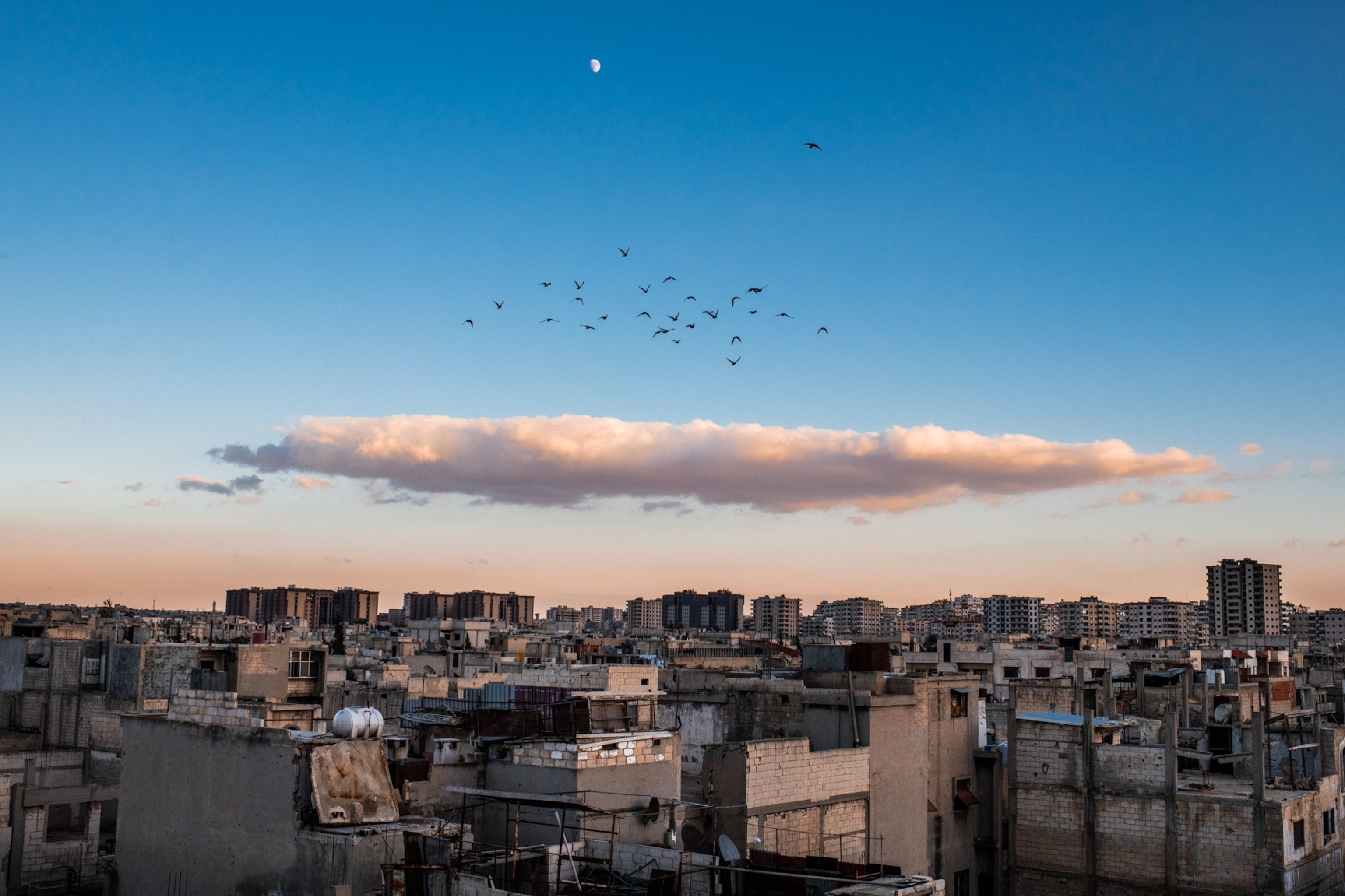
Faisal’s neighborhood was desolate. From a prewar population of more than 30,000, only 450 families had returned to Baba Amr by the end of 2017, according to a government source. Last fall the Fetrawis were the only family living on their street. Others had left the neighborhood during the siege and were slowly applying for permission to return. But Faisal’s family had only left their home for a few weeks at a time during the most intense bombardment. The buildings on each side of their home were badly damaged and barely livable.
On the first Thursday in November, Faisal’s home became a woman-only sanctum. Female relatives and friends hurried past him, shrouded in coats and head scarves, clutching plastic bags. They changed rapidly in a cramped bathroom, emerging in glittering sequined gowns, the teenage girls in tight, racy dresses, their hair in dramatic coifs. For many this was the first wedding celebrated at home in Baba Amr since the war began. Guests chatted among themselves with tense smiles as they awaited the bride’s arrival, taking long drags on thin cigarettes. The mother of the bride, Nuhad, sat in a simple black dress, her face scrubbed clean and nails bare. Her four-year-old son ran giggling around her legs. Nuhad was married in this same house in 2001, to Faisal’s son. Her wedding had been on the second floor, in the once ornately decorated rooms, but now a patchwork of wood and plastic tarps covered gaping holes in the walls and the surfaces were littered with debris. Back then their parties spilled onto the roof, where Faisal now kept pots of plants, coaxing life back to his home. Farida’s wedding would be a muted occasion, confined to just one room of the ground floor. There would be no big celebration like her mother had. Farida would simply put on her wedding dress in the same small space as the guests had and then join the other women in this internal room, away from windows, a hidden celebration in a half-collapsed house. Then her groom, who would spend the day celebrating with the men of the family, would collect her in a car from her grandparents’ house and take her back to a house in another part of the city, where she would live.
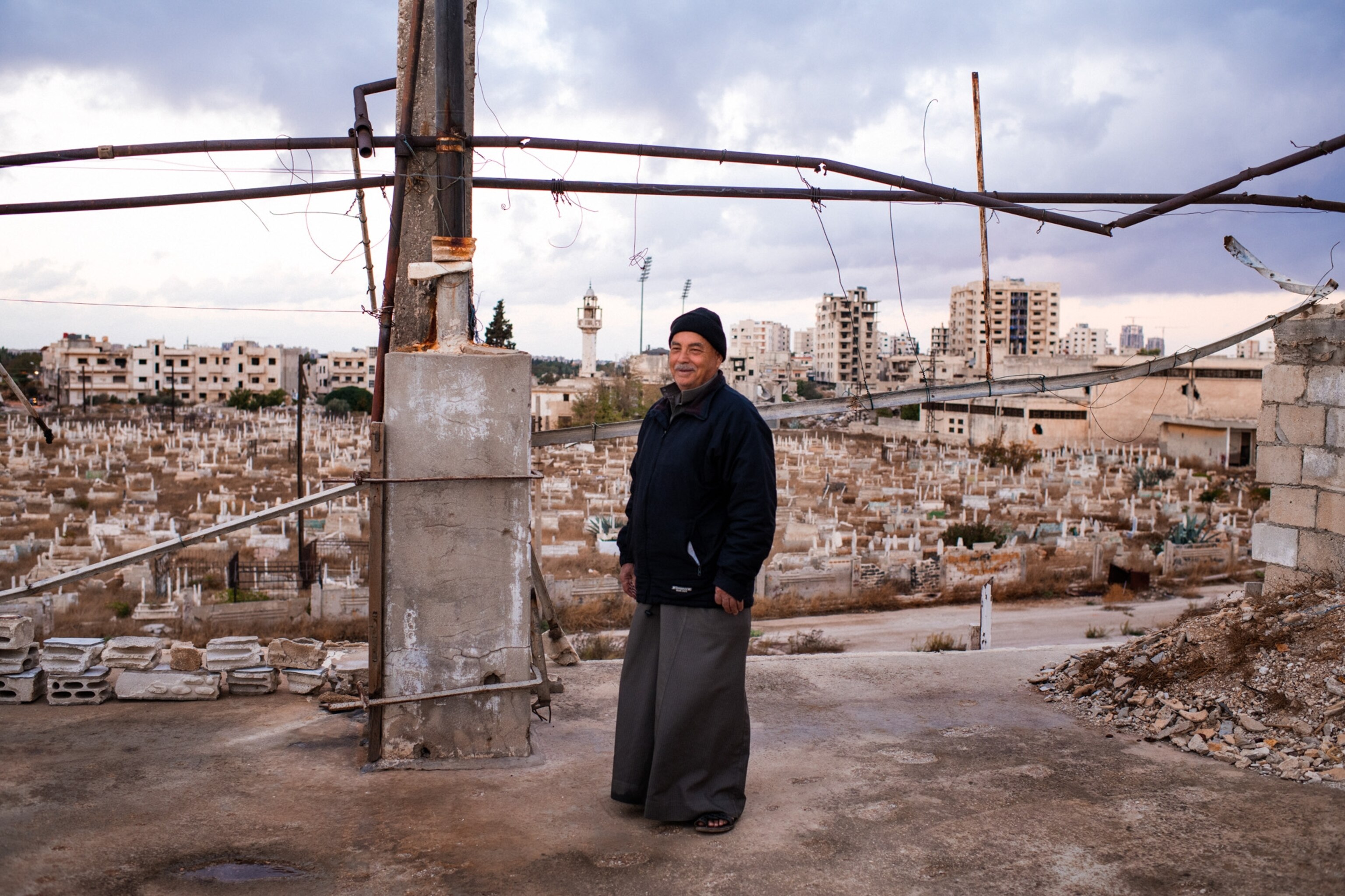
“I wish her dad was here,” Nuhad murmured. The bride’s father, Mohammad Adnan, a 39-year-old builder, had disappeared from a shopping mall in early 2016. The family said government security forces took him for questioning and he never came back. With so many men gone missing or dead, the women had promised each other that there would be no dancing or singing. The bride’s grandmother, also named Farida, had stressed this rule repeatedly, explaining the importance of respecting the losses the family was still mourning. But toward the end of the evening, one woman hurried into the room from the kitchen, holding up a glass bowl with a cell phone inside, amplifying the beats of an Arabic pop song. She informed those present that no one was to sing or clap. But Farida would have one dance on her wedding day. In her glittering white, rented wedding dress, Farida rose to her feet, her hair in giant swirls atop her head, green and pink eye shadow streaking her eyelids, a silver tiara glinting in the low light. She dipped and swayed gently as the room of women sat watching, hands clasped and lips tight, cheering her on with their eyes. Her fiancé was her 26-year-old cousin. He worked in a bakery and brought her home chocolate biscuits. She explained quietly that her groom did not want her to study after they were wed. In Syria, child marriages had spiked during the insecurity of the conflict.
The checkpoint-guarded entrance to the Baba Amr neighborhood is a 10-minute drive from the center of Homs, a bustling hub of shiny storefronts and cafés that would seem untouched if not for the still broken windows of public buses passing by. At a stable on the outskirts, where people come to ride a liver-colored horse called Liberation, the barn is pitted with bullet holes. On Baba Amr’s main street, a roundabout filled with stalky yellow and red flowers, flags flying aloft at its center, provides a sudden assault of color amid the gutted buildings.
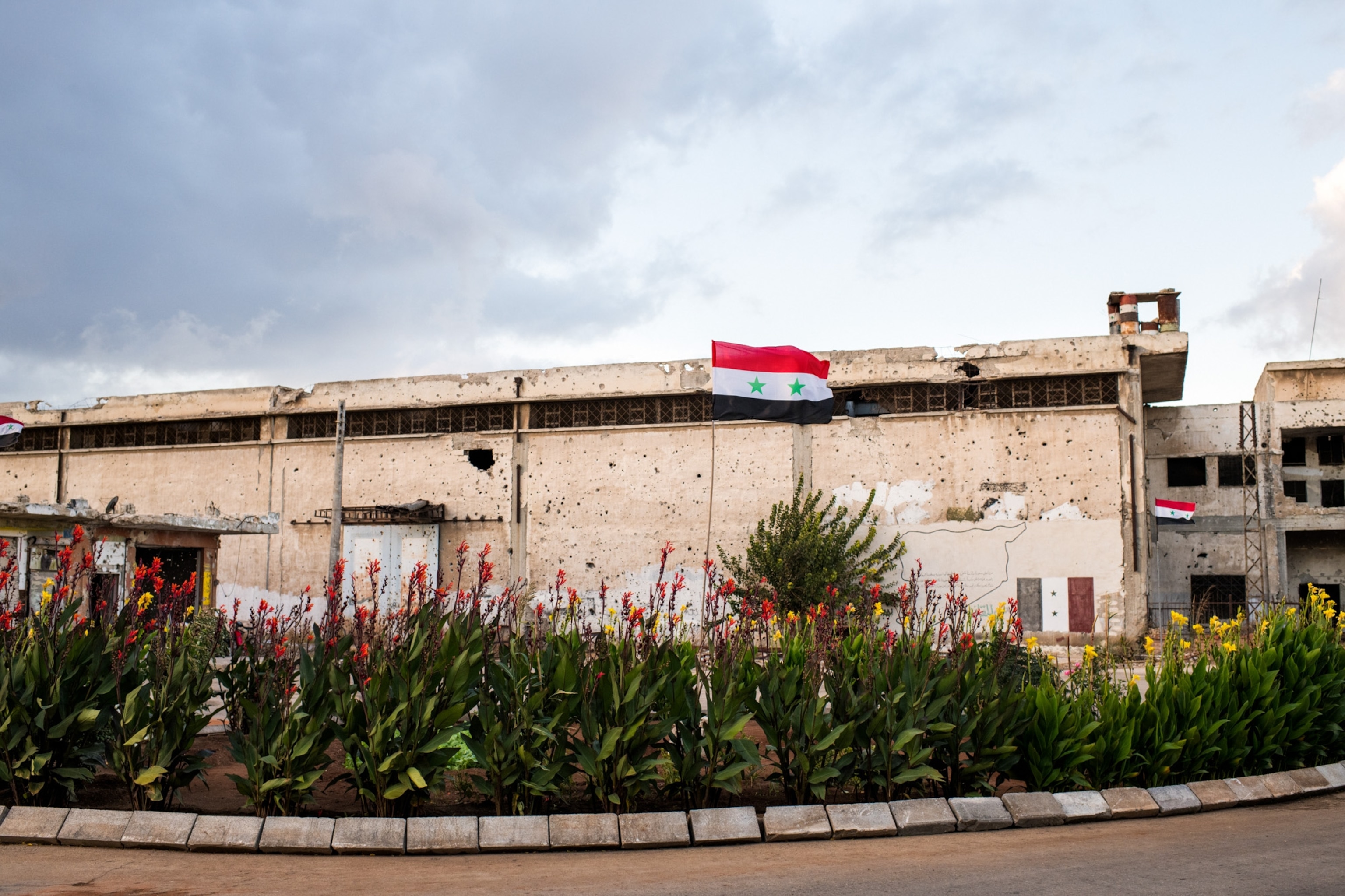
On a rainy Monday, the week before the wedding, I met Faisal while walking along the road in front of his house. The government required journalists to travel with an official minder at all times, often with an armed soldier in tow. The minder stressed there were no families living in that area of Baba Amr, but there was Faisal, sitting outside his front door on a plastic chair. He welcomed me into the front room, out of the cold, to speak with his sister, Raghda, and his wife. Bullet holes marked the cream wall. A bowl of decorative shells sat on a table, and in a display cabinet an old silver boom box stood proudly above a TV draped in lace. In front of their house, Faisal had transformed an otherwise barren verge into a vegetable garden with fat, gleaming cabbages and neat rows of green leaves. “I hope soon Syria will be full of flowers,” he said.
Despite his optimism, the violence that had surrounded his home still played across his mind. He remembered that a house nearby was hit in 2013. “The house was completely down,” he said. “A six-year-old boy died.” He and his wife immediately fled the neighborhood. “We saw that the armed group entered Baba Amr again, so we knew that the situation will be bad and we left.” They stayed with his sister, in a suburb of Homs, for a month and a half. When they returned, they went seven months without any electricity or running water. It was too expensive for Faisal to rent another home.
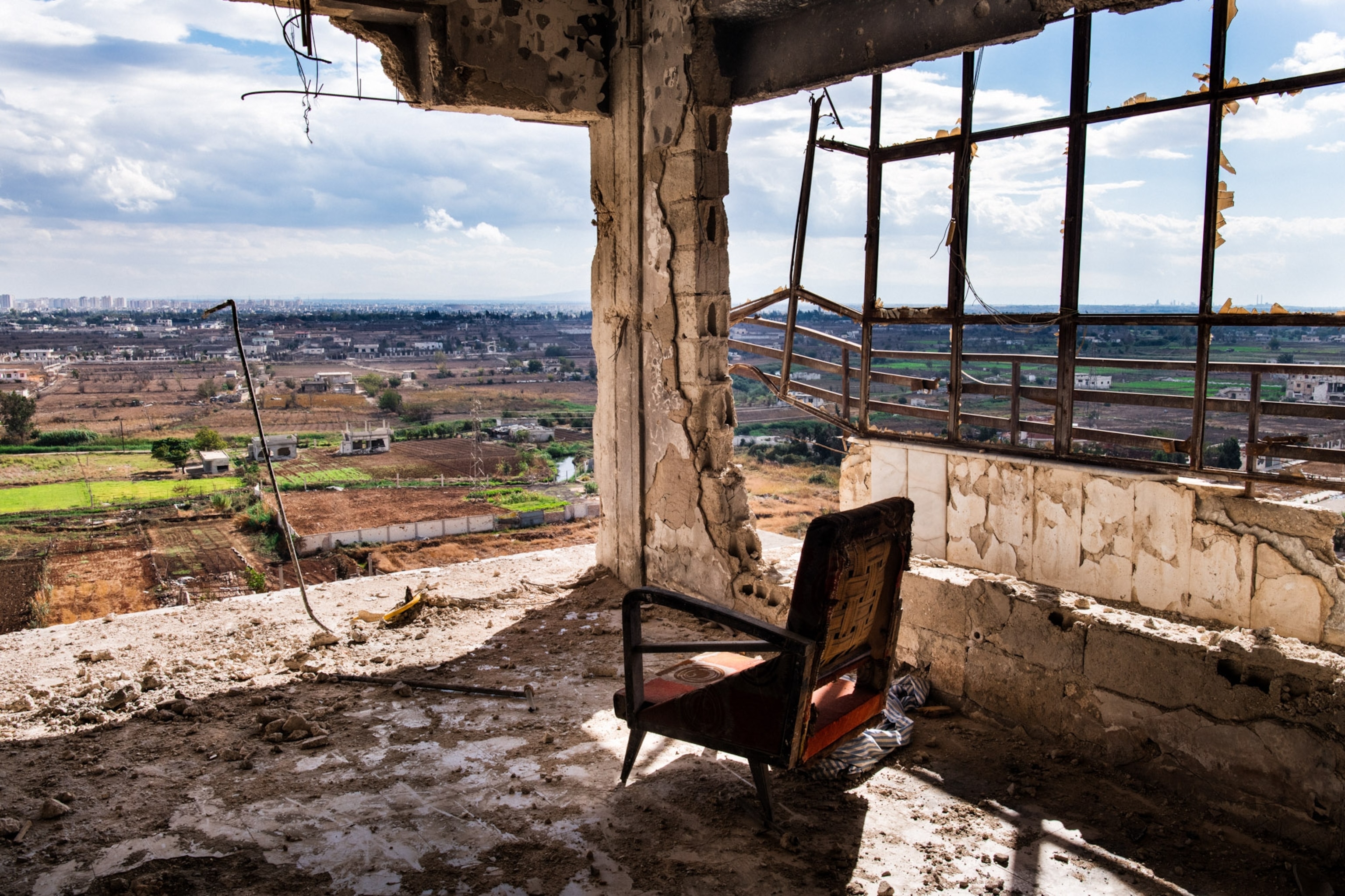
Many of the women at the wedding, eager to celebrate a moment of happiness, were at the same time mourning loved ones who had disappeared. In a bejeweled turquoise dress, Farida’s 16-year-old cousin, Tasneem, sashayed around with a gold tiara and a mouth full of braces. She was also engaged, but her mother, Mouna, wanted her to finish school first. Her father, Ghadfan, who was Faisal’s other son, was also missing. In 2013 he went to work in a nearby neighborhood and never came back. Enforced disappearances had become common during the conflict. Thousands of people detained during the war were reported to have died in Syria's prisons, with allegations of summary executions and prisoners dying of torture and starvation. “We searched,” said Mouna, “but nothing.” She moved her three children to Al Waer, a Homs neighborhood. “Life teaches us,” she said, “to be strong.”
The bride’s grandaunt, Raghda, a vigorous woman whom everyone at the small ceremony looked up to, was also missing a son. Married at 14 herself, Raghda was critical of her niece marrying so young. “It will be like a baby raising a baby,” she said. Around the corner from Faisal’s home, on the street where Raghda lived, a handful of families had returned. She worried about snakes, since the walls of her house still had holes. But she was determined to stay in Baba Amr and rebuild. Six of her daughters were born in the house. “I hope the whole street will be full of families again,” she said. She still rents a room in a nearby neighborhood, where her sick husband lives. This room is a fail-safe because she has a lingering fear that the air strikes and gun battles could once again return to the streets of Baba Amr. “Maybe the situation becomes bad again,” she said hesitantly.

Photos of her missing son, Khaled, who used to work as a hairdresser, hung like a shrine on her wall. In 2015, when he was 20 years old, not long after the siege of Homs had ended, Raghda sent him away to his sister, who lived in Jordan, but he disappeared on the way back from a failed crossing. She doesn’t know what happened to him, whether he was detained for trying to leave the country or whether he was kidnapped by one of the armed groups along the way.
Raghda tried to explain the glory of wedding parties before the war. “Now you cannot celebrate loudly,” she said. “There are martyrs in your house and your neighbor’s house.” “Martyrs” is a word used by both sides of the conflict to name those who have died during the war.
Fatima, Raghda’s 20-year-old daughter, with sculpted eyebrows and a pinched face, was in her first year of law school. She wanted to graduate and then join the military. “I love my country,” she said. “But my mother says no.” Raghda did not want her daughter to join the army.
After a few hours the wedding celebration in the Fetrawi home began to wind down. The bride’s face was flushed and glowing but without tears. Her mother had been worried the whole night that Farida might cry. This was a landmark in her daughter’s life, and Farida’s father was not there to share it with them. Unable to properly mourn him, still hoping he might be returned to them, they were left with a strange void. Many of the women who had gathered in the Fetrawis’ decorated living room were quietly bearing that same pain. Before they left, the women filed one by one into the bathroom to recloak themselves, no trace of sequins or glitter for their journeys back to the different parts of the city where they now lived. Outside, stray dogs howled in the pitch black, the window of the Fetrawi home a faint glimmer on the deserted street.

